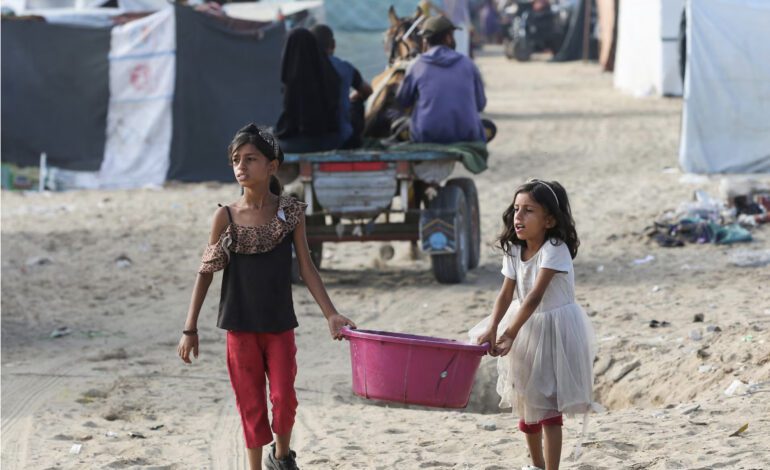Israeli tanks advanced deeper into the western area of Rafah, amid one of the worst nights of bombardment from air, ground and sea, forcing many families to flee their homes and tents under darkness, residents said on Thursday.
Residents said the Israeli forces thrust towards the Al-Mawasi area of Rafah near the beach, which is designated as a humanitarian area in all announcements and maps published by the Israeli army since it began its Rafah offensive in May.
The Israeli military denied in a statement it had launched any strikes inside the Al-Mawasi humanitarian zone.
Israel said its assault aimed to wipe out Hamas’ last intact combat units in Rafah, a city which had sheltered more than a million people before the latest advance began. Most of those people have now moved north towards Khan Younis and Deir Al-Balah in central Gaza Strip.
The Israeli military said in a statement it was continuing “intelligence-based, targeted operations” on Rafah, saying forces in the past day had located weapons and killed Palestinian gunmen in close-range combat.
Over the past day, the military said it had struck 45 targets across the Gaza Strip from the air, including military structures, militant cells, rocket launchers and tunnel shafts.
Israel has ruled out peace until Hamas is eradicated, and much of Gaza lies in ruins, but Hamas has proven resilient, with militants resurfacing to fight in areas where Israeli forces had previously declared to have defeated them and pulled back.
Ceasefire proposal
The group welcomed a new U.S. ceasefire proposal, but made some amendments, reaffirming its stance that any agreement must secure an end to the war and a total withdrawal from the Gaza Strip and lifting the siege imposed by Israel on the Strip, a demand Israel still rejects.
Israel described Hamas’ response to the new U.S. peace proposal as total rejection, but the efforts to secure an agreement are still continuing, according to mediators Qatar and Egypt, backed by the United States.
— Reuters. Edited for style.






Leave a Reply